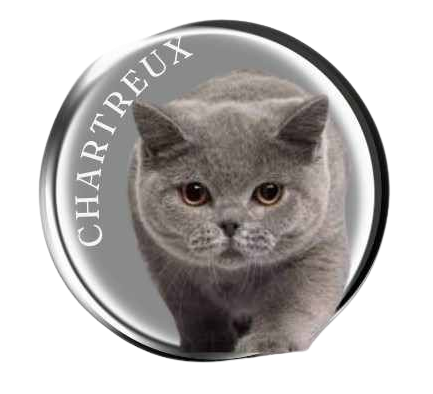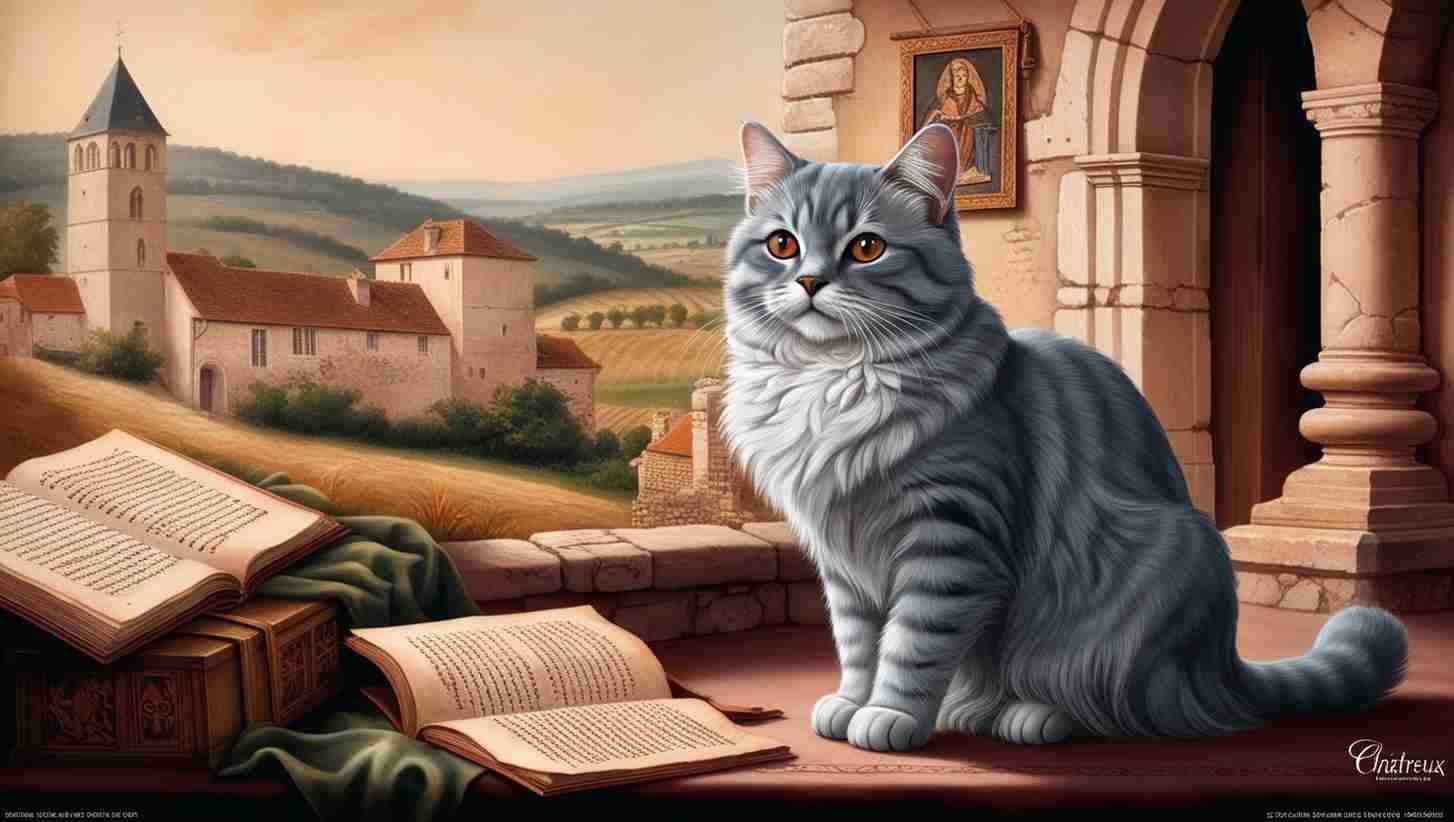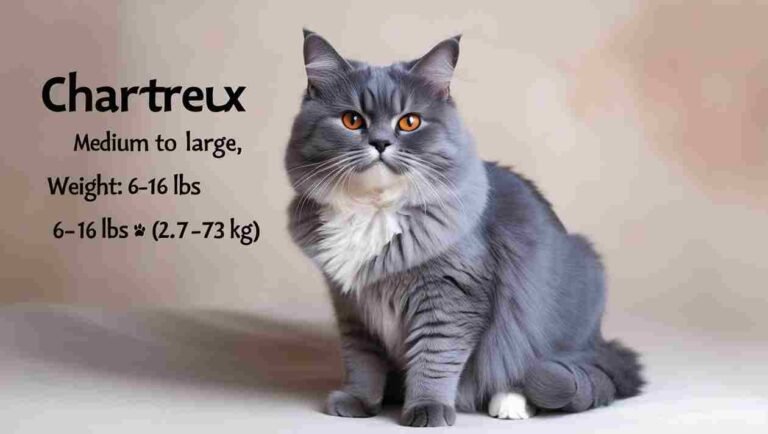Chartreux Origin and History: Unveiling the Fascinating Journey of the Iconic French Cat
The Chartreux cat, often referred to as the “smiling blue cat of France,” boasts a fascinating history intertwined with legends, trade routes and centuries-old traditions. This natural breed likely originated in the mountainous regions of Turkey, Iran and Syria, arriving in Europe via Crusaders and ancient trade routes. With its striking blue-gray coat and golden eyes, the Chartreux has been celebrated in French art, poetry and culture for centuries. Its connections to the Grande Chartreuse Monastery and Carthusian monks add to its mystique, although these ties are more folklore than fact. The Chartreux origin and history are truly captivating and reflect its remarkable journey through time.
Over time, the Chartreux faced challenges, including near extinction during World War II. Thanks to the preservation efforts of the Leger sisters and selective breeding programs, the breed was revived, blending its natural traits with controlled crossbreeding. Today, the Chartreux is recognized as a distinct and cherished breed by international cat associations. Known for its woolly fur, mild temperament and exceptional hunting skills, it remains a symbol of elegance and resilience.
This article delves deep into the captivating story of the Chartreux cat, tracing its journey from ancient trade routes to modern recognition. Readers will explore its historical roots, cultural significance and the dedicated efforts that saved it from disappearing. Whether you’re a cat enthusiast, a history lover or simply curious, this detailed account promises to enrich your understanding of this iconic breed.
Summary of Key Points:
- Historical Origins: From Turkey, Iran and Syria to France via Crusaders and trade routes.
- Cultural Significance: Celebrated in French art, poetry and folklore.
- Challenges and Preservation: Near extinction during World War II and revival through breeding efforts.
- Distinct Traits: Blue-gray coat, golden eyes and woolly fur.
- Modern Recognition: Recognized by international cat associations and admired for its elegance.
Dive into the full article to uncover the Chartreux origin and history rich heritage, remarkable journey and enduring appeal. Learn why this breed continues to captivate hearts worldwide and discover the unique factors that set it apart. Read on to explore the Chartreux’s legacy in more detail!
Chartreux Origin and history
The Chartreux origin and history are marked by resilience and cultural significance. Known for its unique blue-gray coat and golden eyes, this breed has connections to French art and folklore. It is also celebrated for its adaptability and hunting skills. From ancient trade routes to modern recognition, the Chartreux embodies elegance and an enduring legacy.
Native Development in France
- The Chartreux origin and history is considered a natural breed, adapted to the French landscape.
- Its dense, woolly coat helped it survive harsh mountainous climates.
- Known as France’s “Smiling Blue Cat,” the breed gained its name for its friendly appearance.
- Historical records tie it to early rural settlements, especially in Provence and Grenoble.
- Often associated with France, the Chartreux became a cultural emblem over centuries.
The Chartreux’s natural evolution and adaptation highlight its resilience and deep connection to French heritage.
Historical Roots and Trade Routes
- The breed is thought to originate in regions like Turkey, Iran and Syria.
- Cats resembling the Chartreux traveled to Europe via the Silk Road and Crusades.
- Returning Crusaders brought these mountain cats to France in the 13th century.
- Mediterranean trade routes played a key role in spreading the breed.
- Early references mention “blue-gray cats” in France by the late Middle Ages.
This international journey laid the foundation for the Chartreux’s integration into French life.
Connection to Carthusian Monks
- A popular legend links the breed to the Grande Chartreuse Monastery near Grenoble.
- These cats were believed to be companions and rodent catchers for monks.
- However, no archival evidence from the monastery confirms this connection.
- The “Carthusian” label persists due to the monastery’s name.
- Regardless, the legend remains a cherished part of the Chartreux’s mystique.
While the connection to Carthusian monks is debated, it adds an intriguing layer to the breed’s history.
Historical Timeline of the Chartreux Cat
The Chartreux origin and history span centuries, beginning with its migration from Turkey and Syria to France through Crusaders and ancient trade routes. The breed faced significant threats during World War II, nearly vanishing before dedicated preservation efforts revived it. Over time, it gained recognition for its unique traits, including its blue-gray coat and golden eyes. Today, the Chartreux stands as a symbol of resilience and cultural importance in the feline world.
Medieval Period
- Crusaders played a pivotal role in introducing the breed to Europe.
- Blue-gray cats were prized for their hunting abilities in medieval France.
- Early literary mentions highlight their beauty and utility.
- Rodent control made them indispensable in monasteries and homes.
- They thrived in rural and monastic settings, earning their “working cat” reputation.
The medieval period was a formative time for establishing the breed in France.
Renaissance and Artistic Recognition
- Chartreux cats featured in French poetry and art during the Renaissance.
- Jean-Baptiste Perronneau’s painting of Magdaleine Pinceloup showcases the breed.
- Poets like Joachim du Bellay referenced cats in their works.
- Artists admired their unique coat and expressive golden eyes.
- This cultural admiration elevated the breed’s status among French society.
Art and literature immortalized the Chartreux as an object of beauty and inspiration.
Survival During World Wars
- World War I and II brought challenges, with near extinction of the breed.
- Crossbreeding with Russian Blue and British Shorthair ensured survival.
- French breeders, including the Leger sisters, played a key role in preservation.
- The breed’s population declined due to wartime hardships.
- Focused breeding programs revived its numbers post-war.
Despite these challenges, the Chartreux’s resilience ensured its survival.
Preservation and Modern Recognition
The Chartreux origin and history trace back to France, where these cats were initially valued for their hunting skills. Known for their distinctive blue-gray coats, they were cherished by monasteries and noble families. Despite facing a period of decline, dedicated breeders helped preserve the breed. Today, the Chartreux is celebrated for its gentle nature and striking appearance.
Role of the Leger Sisters
- Christine and Suzanne Leger discovered a colony of blue-gray cats on Belle-Île-en-Mer.
- They established the foundation of the modern Chartreux breed.
- Their selective breeding ensured the breed’s distinctive traits.
- The sisters documented their efforts, influencing global recognition.
- Their work became the blueprint for Chartreux standards worldwide.
The Leger sisters’ dedication is central to the breed’s legacy.
Recognition by Organizations
|
Organization |
Milestone Year |
Contribution |
|
CFA |
1987 |
Championship Status |
|
FIFe |
1977 |
Breed Standard |
|
LOOF |
Mid-20th Century |
French Recognition |
- International recognition cemented the breed’s prominence.
- Breed standards highlight physical traits like the blue-gray coat and golden eyes.
These milestones solidify the Chartreux as a celebrated breed.
Physical and Behavioral Traits
|
Trait |
Description |
|
Coat |
Woolly, blue-gray |
|
Eyes |
Golden, expressive |
|
Temperament |
Gentle, adaptable |
|
Body Structure |
Stocky, muscular |
|
Special Skill |
Excellent rodent catcher |
- The Chartreux’s appearance and behavior reflect its working-class origins.
- Its adaptability makes it a cherished companion for families.
Cultural Significance
The Chartreux origin and history are deeply intertwined with French culture, where they were admired for their grace and intelligence. These cats have long held cultural significance, especially in French folklore, symbolizing mystery and elegance. Their role in monasteries as skilled hunters further elevated their status. Today, the Chartreux origin and history continues to be a beloved cultural symbol in France and beyond.
National Symbol of France
- Known as the “Smiling Blue Cat of France.”
- Owned by historical figures like Charles de Gaulle.
- A symbol of elegance, grace and resilience.
- Revered in French households for centuries.
- Represents a blend of history and modernity.
The Chartreux origin and history embodies the essence of French heritage and pride.
Conclusion
The Chartreux origin and history reflect a rich legacy of resilience, charm and intelligence that has made this breed beloved by cat enthusiasts worldwide. From its roots in French monasteries to its modern-day recognition as a treasured companion, the Chartreux cat stands as a testament to both nature and nurture. Whether you’re drawn to its remarkable history or its captivating personality, adopting a Chartreux is more than just bringing a pet into your home—it’s welcoming a piece of history. Understanding their origins and unique traits can help you make a more informed decision, ensuring your experience with this magnificent breed is fulfilling and enriching.
FAQs about the Chartreux origin and history:
- Where did the Chartreux cat originate?
- The Chartreux cat originated in France, where it was initially cherished for its hunting abilities, particularly in monasteries.
- How long has the Chartreux breed existed?
- The Chartreux breed has a long history, dating back to the 16th century, with some historical references linking them to ancient cat populations.
- What role did the Chartreux cat play in French culture?
- The Chartreux cat was highly valued in French culture for its intelligence, grace, and ability to control vermin, often being kept in monasteries and royal households.
- Why did the Chartreux cat nearly become extinct?
- The Chartreux cat faced a decline in popularity due to the rise of other breeds, but dedicated breeders worked to preserve the breed in the 20th century.
- When did the Chartreux cat gain official recognition?
- The Chartreux cat gained official recognition by international cat registries in the mid-20th century, allowing it to gain widespread recognition and popularity.



